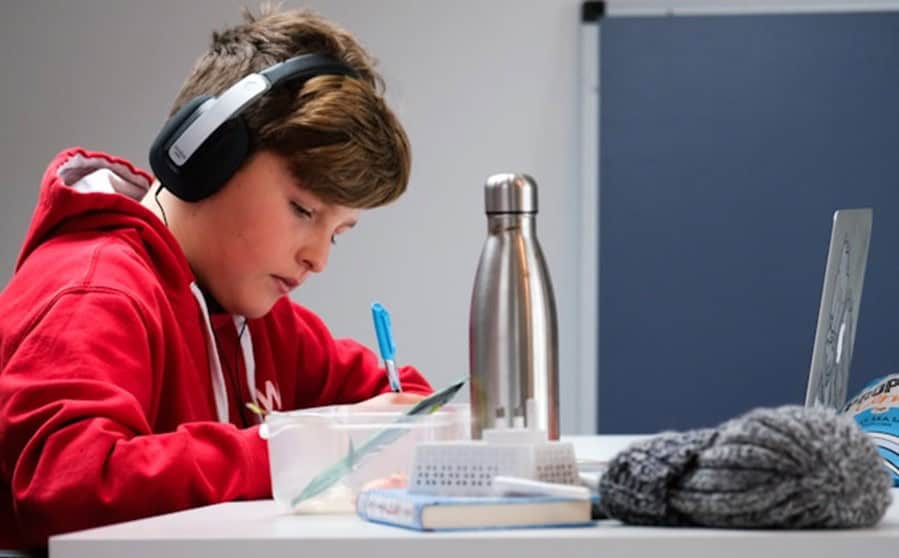The integration of technology into education has transformed how students, educators, and institutions interact with learning. From online schooling programs to digital collaboration tools, technology has unlocked new possibilities for accessible and flexible education. However, this rapid growth of digital platforms also brings critical challenges, including cybersecurity risks, data privacy concerns, and the need to support students’ social and emotional well-being in a virtual environment. This article explores these challenges and highlights how 21st Century Cyber Charter School (21CCCS), is proactively protecting students and staff from cyber threats while fostering a secure and supportive digital learning environment.
The Digital Transformation in Education
The shift to digital education platforms has accelerated, driven by advancements in technology, increased internet access, and, more recently, the global pandemic. Online learning tools, cloud-based platforms, and virtual classrooms have enabled educators to provide high-quality education to students across the world, regardless of geographical barriers.
The rise of hybrid learning models, which blend traditional in-person learning with online components, has made technology even more central to the education system. The shift towards remote learning and online assessments, while convenient, has led to an increased reliance on digital infrastructure, creating a need for robust cybersecurity measures to safeguard against potential threats.
Cybersecurity in Education: Protecting the Virtual Classroom
Cybercriminals exploit vulnerabilities in digital systems, leading to data breaches, ransomware attacks, and phishing schemes. Educational institutions must implement layered protections, including network security, endpoint protection, and regular backups, to safeguard against these risks. In 2020, the University of California suffered a significant cyberattack, which exposed sensitive data on over 3 million students, staff, and faculty. Such incidents highlight the importance of maintaining rigorous cybersecurity protocols.
At 21CCCS, we implement multiple levels of security to ensure the integrity of our online learning environment. Our approach includes professional development for staff on cybersecurity best practices and regular updates in student and parent newsletters. These measures emphasize the importance of community-wide vigilance in maintaining secure virtual classrooms.
Data Privacy and Student Well-Being
Virtual education collects and processes vast amounts of student data, from academic records to personal identifiers. Ensuring compliance with data privacy regulations like FERPA is critical to safeguarding this information. Cybersecurity education extends to students and parents of 21CCCS, teaching them how to stay safe in a digital world through newsletters and courses.
In addition to privacy concerns, our educators are addressing the challenges virtual learning poses to students’ social and emotional development. The absence of face-to-face interaction can affect relationship-building and community cohesion. To combat this, we focus on fostering connections in digital spaces through innovative strategies and tools.
Supporting Mental Health in Digital Classrooms
Recognizing the impact of digital learning on mental health, 21CCCS has implemented professional development programs for staff to identify and address student well-being concerns. Teachers receive training on security best practices and mental health awareness, ensuring they can provide a safe and supportive online environment. Parents and students are also guided on how to maintain emotional resilience while navigating digital learning tools.
Building Community in Virtual Education
Virtual learning environments face the challenge of creating a sense of community among students who interact primarily online. Our efforts to foster community include interactive discussions, group projects, and opportunities for students to collaborate across virtual platforms. These initiatives help maintain the interpersonal connections vital to a well-rounded education.
Shared Responsibility in Securing Education
Navigating the intersection of technology and education requires a shared commitment to cybersecurity from all stakeholders.
- Educators must model safe online practices, teach cyber hygiene, and secure digital classroom tools.
- Parents should stay informed about school technology, set digital boundaries, and mentor children on online safety.
- Students need to protect their identities, think critically before clicking links, and report suspicious activities.
Together, these actions create a culture of proactive defense, ensuring that technology enhances education while safeguarding all participants.
Conclusion: A Safe and Innovative Future for Education
As technology continues to shape education, cybersecurity and mental health will remain top priorities. By combining cutting-edge tools with robust security measures and a focus on community well-being, educational institutions can create a safe, secure, and inclusive environment. 21CCCS demonstrates that with vigilance and collaboration, the potential of digital learning can be realized while protecting those who rely on it.




